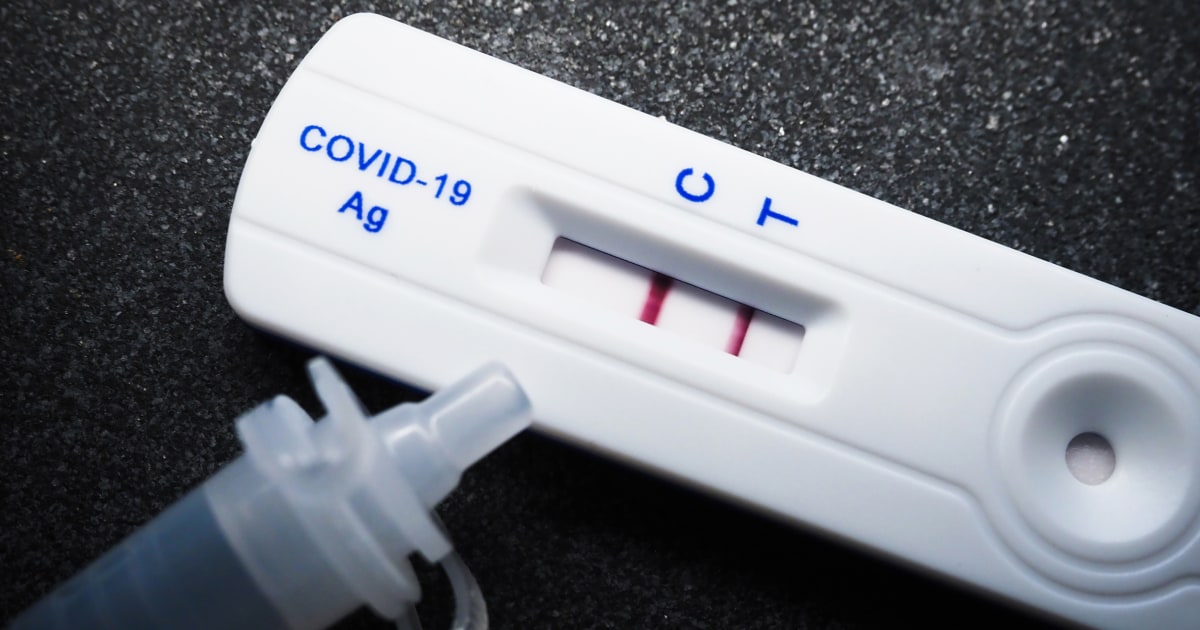
As the nation enters yet another summer Covid wave, doctors say it’s nearly impossible to diagnose a person with the illness based on symptoms alone.
“Every week, we test someone for Covid who I didn’t think had it who tests positive. Then we have others who I’m pretty sure have Covid who test negative,” said Dr. Steven Furr, a family physician in Jackson, Alabama, and president of the American Academy of Family Physicians.
“It’s really hard to separate Covid from any other respiratory illness right now,” he said.
Covid patients, Furr and other doctors said, are showing up at clinics with a spectrum of symptoms.
“Some people have a very classic sore throat, runny nose, cough and low-grade fever,” said Dr. Paul Sax, the clinical director of the division of infectious diseases at Brigham and Women’s Hospital and a professor of medicine at Harvard Medical School. “In others, it’s mostly nausea and diarrhea with very minimal respiratory symptoms. It can vary from A to Z and beyond.”
Dr. Bernard Camins, medical director for infection prevention at the Mount Sinai Health System in New York City, has noted the same trend.
Without a test, “you can’t tell nowadays whether it’s a cold or Covid,” Camins said.
As of mid-June, the Centers for Disease Control and Prevention said it appeared that Covid infections were rising in 39 states. Covid-related emergency department visits, hospitalizations and deaths are all up as well.
Covid keeps changing to be more contagious
The diagnostic landscape is dramatically different from 2020, when a fever was considered a strong indication of Covid.
“That’s not really a major sign anymore,” Furr said. “Now, there’s no one symptom where you say, ‘Hey, you probably have Covid.’ Without a test, we’re not going to know for sure.”
There are multiple reasons for the change. Nearly everyone’s immune system has been exposed to the virus multiple times through vaccination, infection or both.
“That appears to ameliorate the severity of the disease over time,” Sax said. “Recurrent infections are typically milder than first-time infections — not always, but usually.”
What’s more, the virus itself has changed again and again. The latest omicron subvariants that account for a majority of cases — KP.3, KP.2 and LB.1 — are adept at making people sick, but usually not too sick.
LB.1 in particular “has the potential to infect some people more easily based on a single deletion in a spike protein,” a CDC spokesman said in an email. “However, there is currently no evidence that LB.1 causes more severe disease.”
Earlier this month, the Food and Drug Administration told vaccine makers to target the KP.2 strain for this fall’s round of Covid shots. On Thursday, a CDC advisory panel is scheduled to discuss who should get them.
The experts are at least likely to recommend updated Covid vaccines for people most at risk of complications: older adults 65 and above and people who are severely immunocompromised, such as organ transplant recipients.
People with underlying conditions are also likely to be on the list. Sax said that many people hospitalized with Covid now have other chronic illnesses, such as congestive heart failure.
“Their heart isn’t pumping very well” to begin with, he said. “Then along comes Covid, and their congestive heart failure gets worse.”
When to test, and when to isolate?
Given the array of possible Covid symptoms, it may be difficult to know when to take a test. And tests may give false negatives if taken too early.
“We still have cases who test negative on initial testing and test positive a day or two later,” said Dr. Abraar Karan, an infectious disease fellow at Stanford Medicine in California. Karan said that’s not surprising because “the amount of virus present has to increase enough in the sample for it to be detectable.”
Antigen tests — the ones many Americans have squirreled away at home — are especially susceptible to false negatives when people first start to feel sick.
“Rapid tests often aren’t positive on the first day of symptoms,” Sax said. “It often takes day two or three or four” for the test to pick up enough of the virus for a positive result.
If a person does test positive, there is no longer a mandatory five-day isolation period, the CDC said this spring in updated guidance.
Instead, the CDC advises that people stay home when they’re symptomatic, but return to school, work and social activities once they’re feeling better.
“Once the symptoms resolve or are all but done, there really are no rules about stopping isolation,” Sax said.






